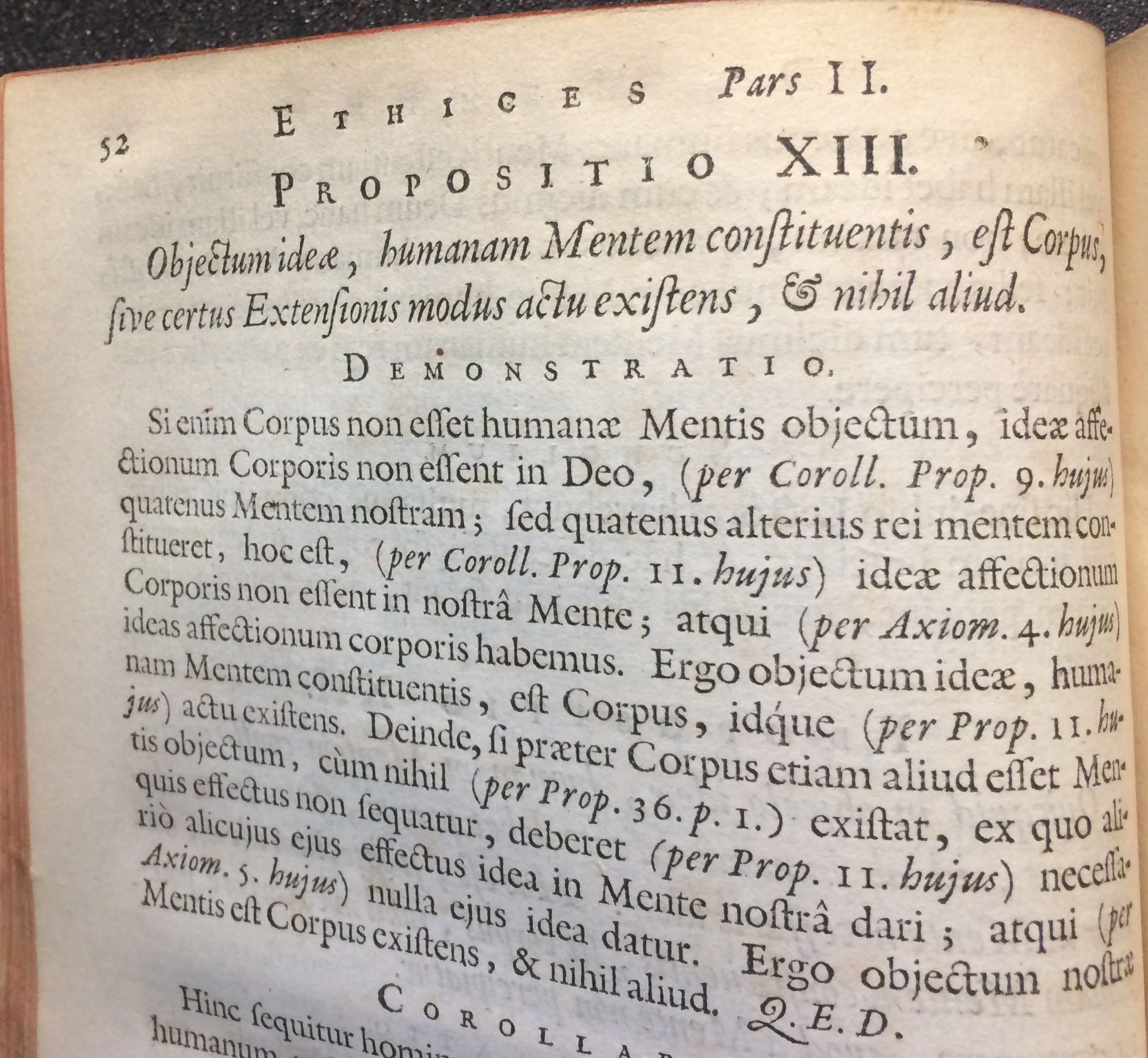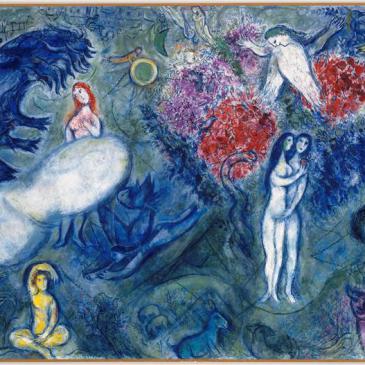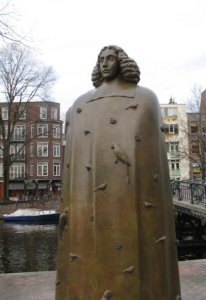
There’s an old adage that you can choose your friends but you can’t choose
your family. Well, that’s kind of true, although many people decide to cut
themselves off from family, either individual family members or the full
breakfast. But how about the communities we participate in? I’m not talking
about that vague (non)entity sometimes described as ‘the Community,’ but the
many separate, intersecting and concentric circles in which we move, live and
breathe, and which, to a greater or lesser extent, make us what we are.
Jews are often characterised, sometimes negatively stereotyped, as belonging
to a community that is not only close but closed. The ultimate exclusive
private members club, we seem to make little effort to welcome those who want
to join, even holding a tradition that a rabbi should make three attempts to
dissuade a potential convert. And that’s before they can even be considered for
acceptance as a pilgrim on the long and sometimes arduous journey towards
membership of the Jewish People
Including inclusivity from the start
And so it might seem surprising that in the long series of speeches by the
prophet Moses that make up the biblical Book of Deuteronomy (or Devarim),
one particular passage stands out as flying in the face of this cherished
exclusivity. In fact, Moses makes the boundaries of the community seem so
permeable, or should I say expansive, as to seem to disappear
altogether.
You stand this day, all of you, before the Eternal your God — your
tribal heads, your elders, and your officials, every householder in Israel,
your children, your wives, even the stranger within your camp, from woodchopper
to waterdrawer— to enter into the covenant of the Eternal your God, which the
Eternal your God is concluding with you this day, with its sanctions;
in order to establish you this day as the people of the Eternal, and in order
to be your God, as promised you and as sworn to your fathers Abraham, Isaac,
and Jacob. I make this covenant, with its sanctions, not with you alone, but
both with those who are standing here with us this day before the Eternal our
God and with those who are not with us here this day. (Deuteronomy
29:9-15)
Granting Rashi his interpretation of the ‘woodchopper’ and the ‘waterdrawer’
as being male and female servants respectively and noting that the phrase ‘the
stranger within your camp’ includes pretty much everyone else, we have a covenantal
community made up of…well…everyone. God is making a deal with men and
women, adults and children, tribal elders and plebeians, priests and laypeople,
Israelites and resident aliens – all and sundry.
Far from a homogenous, ethnic monoculture, this people is, to use the Hebrew
phrase, an erev rav or ‘Mixed Multitude’, a phrase used in Exodus 12: 39 to
encompass those who were not Hebrews, but who made their own escape from Egypt,
perhaps taking advantage of the chaos when Pharaoh allowed Moses to lead the
Israelites out of Egypt. And just in case anyone’s missing from the list, the
passage throws in not just those standing there that day but those who are not
with them that day. Logically, that would seem to include absolutely everyone
who exists, ever existed or ever will exist – although commentators have
interpreted it as meaning specifically that the covenant is binding on those of
the People of Israel born later, in other words all of the descendants of
Jacob, both biological and spiritual up to the present and beyond.
Far from exclusive, we have Moses, arguably the founder of Jewish faith,
opening the floodgates to pretty much anyone who wants to come to the party, so
long as they accept that in doing so they are equally bound by all the terms
and conditions, whether they have ticked the box or whether they have not
ticked the box. All they have to do is to decide to show up and stand with the
people before God. Stand with us and you’re in.
According to Rabbi Sheila Shulman in her sermon ‘All of You’, it is this
‘decision, on the deepest level, to include herself or himself in, or not’ that
determines whether a person is part of the Jewish Community – Klal Yisrael.
It is not down to presumed gatekeepers, who may wish to exclude, for
example, converts, LGBT people or patrilineal Jews, but ultimately the
individual themselves who by ‘deciding with their whole being that he or she is
part of [the Jewish People], by linking up their whole being to the history,
the experience, the continuing life, of this unique people.’ By emphasising a
sense of ‘oneness; as uniqueness rather than homogeneity,
Rabbi Shulman opens up the seemingly paradoxical idea that diversity is a
condition for unity rather than an obstacle to it. After all, why even mention
‘unity’ if we are talking about a set of identikit members?
Or course divisions inevitably give rise to disagreement, discussion and
debate – all forms of discourse and deliberation to renew and replenish the
community’s mores and culture. But what should be a community’s attitude to the
alienated member, who at once both attempts to exclude others while refusing to
participate in the deliberative process? Should we try to include the person
who seems only to desire exclusion, both of others and, if only unconsciously,
themselves?
Tolerating the intolerant
This problem is related to the famous (or infamous) Paradox of
Tolerance. In what might be one of the most influential footnotes in
intellectual history, the philosopher Karl Popper
questioned the liberal belief that all strands of opinion should be tolerated
in a free society. As a side remark to his exegesis of Plato’s critique of
democracy, Popper writes:
Less well known is the paradox of tolerance: Unlimited tolerance must
lead to the disappearance of tolerance. If we extend unlimited tolerance even
to those who are intolerant, if we are not prepared to defend a tolerant
society against the onslaught of the intolerant, then the tolerant will be
destroyed, and tolerance with them. – In this formulation, I do not imply, for
instance, that we should always suppress the utterance of intolerant
philosophies; as long as we can counter them by rational argument and keep them
in check by public opinion, suppression would certainly be most unwise. But we
should claim the right to suppress them if necessary even by force; for it may
easily turn out that they are not prepared to meet us on the level of rational
argument, but begin by denouncing all argument; they may forbid their followers
to listen to rational argument, because it is deceptive, and teach them to
answer arguments by the use of their fists or pistols. We should therefor
claim, in the name of tolerance, the right not to tolerate the intolerant. We
should claim that any movement preaching intolerance and persecution as
criminal, in the same way as we should consider incitement to murder, or to
kidnapping, or to the revival of the slave trade, as criminal.
(The Open Society and Its Enemies)
Although we might baulk at the criminalisation of movements, presumably only
on the basis of their ideology, it should be remembered that Popper, an
Austrian with Jewish ancestors who lived through the rise of the Nazis and the
Second World War, had witnessed the dangers of a laissez-faire
approach, the so-called ‘market place of ideas.’ To stretch this economic
metaphor, Popper seems to be stating a principle analogous to Gresham’s Law,
that bad money – or in this case bad ideology – drives out good.
Inclusive values
In a community, such as a synagogue, which does not have the mechanisms of
courts and gendarmerie, how can the intolerant individual or faction be
resisted, beyond simply sending them into exile, suspending their membership or
perhaps, removing them permanently (as in what happened to a particular intellectual hero of mine)?
It seems to me that an inclusive community has two possible
approaches to the problem: one therapeutic and the other preventative. The
first of these would involve rehabilitating the person, explaining what is
required and expected of each member of the community and conversely, what they
can expect from their colleagues or comrades. And if this sounds too much like
the Soviet-era euphemism of re-education, remember that therapy is a
two-way process and in this case, the intolerant individual might, by the persuasive
expression of their views, change the community for better. But that is the
risk we take in any genuine dialogue, the end point is never fixed if entered
into in a spirit of openness; it always involves uncertainty.
However, dialogue requires speech that is respectful and responsible.
Parties must enter into a relationship, giving attention to the other, however
painful this might be. And perhaps most importantly, those who dissent from the
ethical norms of the community must take personal ownership of their views, not
represent them as those of some ill-defined ‘silent majority’ or a vague notion
of ‘tradition’, a vague, intangible legacy of which they are the self-appointed
executors, interpreters and advocates.
And although taking ownership of any counter-cultural opinions always requires
courage, the alternative (anonymous missives or trolling on social media)
precludes the possibility of dialogue, an encounter that, given trust, openness
and indeed, the admission of a grain of doubt, can recast conflict as the
engine of ethical and spiritual growth. Writing poison pen letters or graffiti
on lavatory walls – that ain’t it!
And as for prevention? Communities need to make their values explicit and
understood. Like the ancient biblical tradition of Hakhel, reading the Torah to the people every seven years, there must be some contractual mechanism beyond checking the box stating ‘I
agree to the terms and conditions.’ Such a procedure or constitution would hold
members, both new and old, to broad, fundamental principles to which they have
given considered and explicit consent. These values will always undergo
editing, revision and redefinition, deletions and additions. But by stating
clearly the boundaries of where a community stands, even while positions are
shifting, the community enables new entrants to make an informed choice as to
whether they want to come inside.
Living Community
A community whose collective opinions are frozen in time is dead, its
life-blood clotted. This is not to say that everything is negotiable. I happen
to believe that intolerance, homophobia, racism and xenophobia are wrong. So I
choose to belong to groups defined by how they surpass even the ideal of
tolerance, valuing acceptance and celebrating a diversity that is the warp and
the weft, the secret of the strength of such communities. But if we give up on
the messy and sometimes painful business of dialogue, either by stepping
outside and throwing rocks in or by excluding the difficult person who perhaps
just doesn’t know how to speak our language, then we condemn the community to
atrophy and death.
Since I started to write this post I have seen the opening up of new and
bitter division both within the Anglo-Jewish community and beyond. People are
told they are either with us or against us, but this is a classic
all-or-nothing fallacy: in many cases the binary is artificial, ignores
gradation, nuance and perhaps mischaracterises certain pairs of viewpoints as
polar opposites when really they have more in common.
Can we take a stand, bravely and respectfully remaining in dialogue
with those who disagree with us? Have we the courage to choose to be part of
the cut and thrust, the ebb and flow that makes for a living, breathing
community? I hope that we will choose wisely, choosing life so that we, our
communities and our children can live.
Now read on
- Sheila Shulman, Watching for the Morning: Selected Sermons (London: BKY) 2001
- Karl Popper, The Open Society and Its Enemies (London: Routledge) 1995
An example of a Community Ethos for the Jewish Community founded by Rabbi Sheila Shulman can be found at https://www.bky.org.uk/ethos






 For reasons that will become apparent, I’m contemplating the idea of emptiness at the moment. And perhaps something more empty than emptiness, more absolute than mere negation, more devoid of anything and everything than just void.
For reasons that will become apparent, I’m contemplating the idea of emptiness at the moment. And perhaps something more empty than emptiness, more absolute than mere negation, more devoid of anything and everything than just void.

